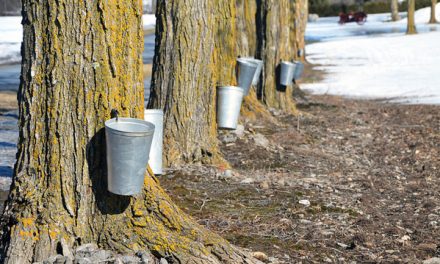Potato Leafhopper
Potato leafhopper (PLH) is the most damaging alfalfa insect pest in Ontario over many years. The damage created is not as dramatic as an alfalfa weevil or armyworm outbreak, however leafhopper damage is more chronic and widespread. Many farmers are unaware of the significance of PLH damage, which is often blamed on the hot, dry weather that frequently accompanies it. PLH damage is common across Southern Ontario. The Niagara area and counties north of Lake Erie are particularly affected and extensive damage often results.
Tiny, green and wedge-shaped
PLH do not overwinter in Ontario, but migrate annually from the Gulf States carried on weather-front air currents. They usually begin arriving in late May. Adult leafhoppers are 3 mm (1/8th inch) long, lime green and wedge-shaped. The adults lay a few eggs per day in the alfalfa stems and petioles, which hatch about nine days later. Juvenile leafhoppers, also called nymphs, are about 1 mm (1/32nd inch) when they hatch. They resemble adults, except they are wingless and are often found on the underside of the leaves.
Explosive growth
The generation interval is short, with about 25 days from egg laying to the adult stage. This gives the leafhopper the ability to have an explosive population growth. Farmers walking in their second and third cut alfalfa fields can often see leafhoppers flying or “hopping” sideways, as they are disturbed. PLH are killed by frost in the fall. Leafhoppers feed on a wide variety of host plants, including edible beans. Biological controls have not been very effective.
Hopperburn
Leafhoppers feed by inserting a stylet into a leaf midrib and sucking sap juices from the plant. They inject saliva containing a toxin into the plants as they feed. This causes abnormal cell growth and interferes with transportation of fluids and nutrients in the leaves. The result is the characteristic “hopperburn”, which starts as a wedge-shaped “V” yellowish pattern on the leaf tips.
Damage
PLH feeding causes reduced stem elongation, reduced root development, leaf cupping and stunting. Yields can be lowered by as much as 50 per cent with a severe infestation, accompanied by reduced protein levels. Decreased stand vigour results in slow regrowth following cutting and increased winterkill. New seedings are very susceptible. Most of the damage occurs from June to mid-August. Symptoms are sometimes confused with nutrient deficiency or herbicide injury, and are often dismissed as “drought damage”.
Scouting
Economic losses occur before plant symptoms develop, so it is important to identify the presence of large leafhopper populations before the damage occurs. It is particularly important to monitor new seedings. Scouting with a sweep net will help you determine whether early harvest or spraying is needed. Scout at intervals of five to seven days, beginning after first cut. To determine the number of leafhoppers, including adults and nymphs, take 10 sweeps and divide by 10. Do this in five representative areas of the field and note the height of the alfalfa.
PLH resistant varieties
A more recent development has been the introduction of PLH resistant alfalfa varieties. These varieties have tiny glandular hairs on leaves and stems that provide tolerance to PLH. The glandular hairs are not fully expressed the first year, so while resistant varieties can dramatically reduce the PLH damage, yield reductions can still occur. New seedings of PLH resistant varieties should be monitored and may still need to be sprayed when PLH pressure is severe.
PLH highly resistant varieties currently registered include:
Quality Seeds’ FSG400LH,
Growmark’s WL345LH and WL352LH,
Pioneer’s 53H92, and
Pickseed’s Trailblazer 4.0.
For performance characteristics of these varieties, refer to the Ontario Forage Crop Variety Performance brochure at www.goforages.ca. Keep in mind that the yield index data comes from locations that typically do not have severe PLH damage. As alfalfa breeding and performance testing efforts continue, there will be more high performance varieties introduced with “Highly Resistance” PLH ratings.
PLH resistant varieties are particularly useful for farmers in the Niagara-Lake Erie area that typically have significant PLH damage. Farmers who do not scout or spray to control PLH may find the use of PLH resistant varieties to be an easy and practical method to help manage the risk.













